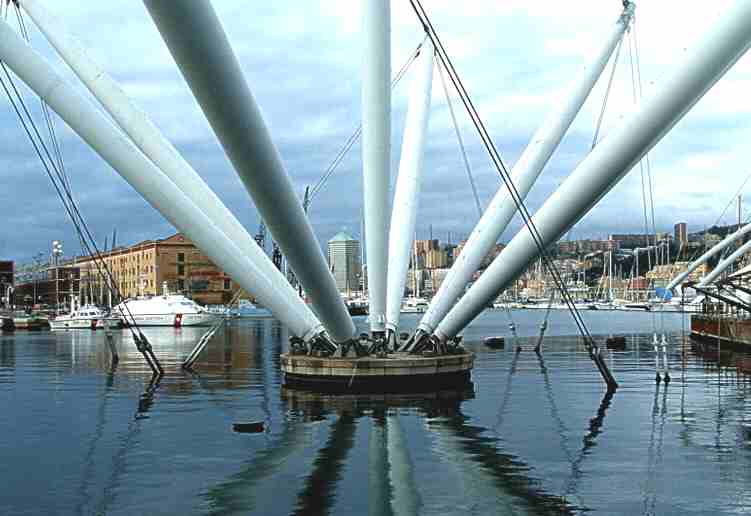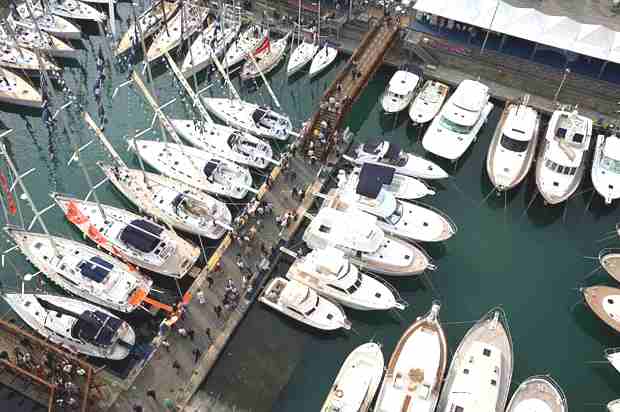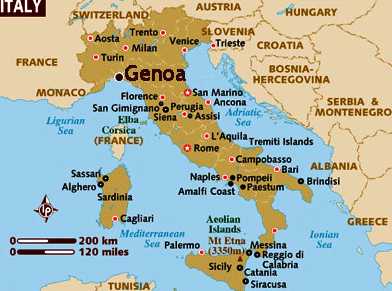|
The World Solar Navigation Challenge W.S.N.C. SOLAR NAVIGATOR - Genoa 2015
|
|
|
The World Electric Navigation Challenge
Genoa (Genova) is a city and a seaport in northern Italy, the capital of the Province of Genoa and of the region of Liguria. The city has a population of ca. 620,000 and the urban area has a population of ca. 890,000. Genua was a city of the ancient Ligurians. Its name is probably Ligurian, meaning "knee" (from Ancient Greek gony "knee"), i.e. "angle", from its geographical position, thus akin to the name of Geneva. Or it could derive from the Celtic root genu-, genawa (pl. genowe), meaning "mouth", i.e., estuary.
Genoa new structure against old harbour
History
Ancient era and early Middle Ages
Genoa's history goes back to ancient times. The first historically known inhabitants of the area are the Ligures, an Italic tribe. The attribution of its foundation to Celts in 25002000 BC has been recently recognized as wrong.
A city cemetery, dating from the 6th and 5th centuries BC, testifies to the occupation of the site by the Greeks, but the fine harbor probably was in use much earlier, perhaps by the Etruscans. It is also probable that the Phoenicians had bases in Genoa, or in the nearby area, since an inscription with an alphabet similar to that used in Tyre has been found.
In the Roman era, Genoa was overshadowed by the powerful Marseille and Vada Sabatia, near modern Savona. Different from other Ligures and Celt settlements of the area, it was allied to Rome through a foedus aequum ("Equal pact") in the course of the Second Punic War. It was therefore destroyed by the Carthaginians in 209 BC. The town was rebuilt and, after the end of the Carthaginian Wars, received municipal rights. The original castrum thenceforth expanded towards the current areas of Santa Maria di Castello and the San Lorenzo promontory. Genoese trades included skins, wood, and honey. Goods were shipped in the mainland up to important cities like Tortona and Piacenza.
After the fall of the Western Roman Empire, Genoa was occupied by the Ostrogoths. After the Gothic War, the Byzantines made it the seat of their vicar. The Lombards submitted it in 643. In 773 the Lombard Kingdom was annexed by the Frank empire; the first Carolingian count of Genoa was Ademarus, who was given the title praefectus civitatis Genuensis. Ademarus died in Corsica while fighting against the Saracens In this period the Roman walls, destroyed by the Lombards, were rebuilt and extended.
For the following several centuries, Genoa was little more than a small, obscure fishing center, slowly building its merchant fleet which was to become the leading commercial carrier of the Mediterranean Sea. The town was sacked and burned in 934 by Arab pirates but it was quickly rebuilt.
In the 10th century the city, now part of the Marca Januensis ("Genoese Mark") was under the Obertenghi family, whose first member was Obertus I. Genoa was one of the first cities in Italy to have some citizenship rights granted by local feudataries.
Modern history
With the shift in world economy and trade routes to the New World and away from the Mediterranean, Genoa's political and economic power went into steady decline.
In 1797, under pressure from Napoleon, Genoa became a French protectorate called the Ligurian Republic, which was annexed by France in 1805. This affair is commemorated in the famous first sentence of Tolstoy's War and Peace:
Although the Genoese revolted against France in 1814 and liberated the city on their own, delegates at the Congress of Vienna sanctioned its incorporation into Piedmont (Kingdom of Sardinia), thus ending the three century old struggle by the House of Savoy to acquire the city. The king of Piedmont even sent the Bersaglieri to sack the city, defining the Genoese as "scum". The city soon gained a reputation as a hotbed of anti-Savoy republican agitation, although the union with Savoy was economically very beneficial. With the growth of the Risorgimento movement, the Genoese turned their struggles from Giuseppe Mazzini's vision of a local republic into a struggle for a unified Italy under a liberalized Savoy monarchy. In 1860, Giuseppe Garibaldi set out from Genoa with over a thousand volunteers to begin the campaign. This is called the departure of the thousands and a monument is set on the rock where the group departed from.
In World War II the British fleet bombarded Genoa and one bomb fell into the cathedral of San Lorenzo without exploding. It is now available to public viewing on the cathedral premises.
The 27th G8 summit in the city, in July 2001, was overshadowed by violent protests, with one protester, Carlo Giuliani, killed amid accusations of police brutality. Trials of accused officials are ongoing as of 2007.
In 2004, the European Union designated Genoa as the European Capital of Culture, along with the French city of Lille.
Venue:
Organiser:
Space/exhibitor enquiries:
Composition of show:
Visitor information:
Map of Genoa international boat show venue
4. GENOA
1. Stockholm, Sweden: Stockholm Floating Boat Show, Aug 30-Sep 2 2. Amsterdam Seaport, Netherlands: HISWA in-water boat show, Sep 4-9
3.
Cannes,
France: Festival International de la Plaisance, Sep 12-17... OR
4. Genova, Italy: Genoa International Boat Show, Oct 6- 14
5. Fort Lauderdale, USA: Fort Lauderdale International Boat Show, Oct 25-29
LINKS and REFERENCE
Galley | Paints | Screens | Diving Project Estimates | Record Attempt | PR Events Batteries | Alloys | Timber | Composites | Navigation | Hydraulics Motors | Electronics | Solar Panels | Propeller | Transmission | Tooling | Life Support Tank Testing (Model Construction)& Results
|
|
|
This website is copyright © 1991- 2012 Electrick Publications. All rights reserved. The blue bird logo and names Solar Navigator and Blueplanet Ecostar are trademarks . The Blueplanet BE3 vehicle configuration is registered ®. All other trademarks hereby acknowledged and please note that this project should not be confused with the Australian: 'World Solar Challenge'which is a superb road vehicle endurance race from Darwin to Adelaide. Utopia Tristar is a trademark for sustainable zero carbon housing. Max Energy Limited is an educational charity working for world peace. |




